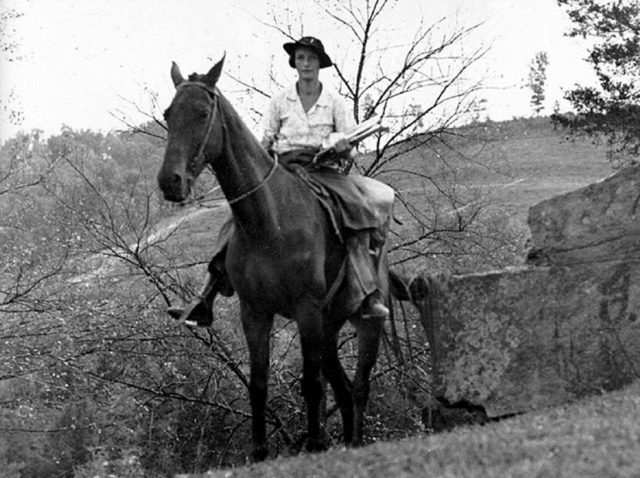From The Smithsonian:
Their horses splashed through iced-over creeks. Librarians rode up into the Kentucky mountains, their saddlebags stuffed with books, doling out reading material to isolated rural people. The Great Depression had plunged the nation into poverty, and Kentucky—a poor state made even poorer by a paralyzed national economy—was among the hardest hit.
The Pack Horse Library initiative, which sent librarians deep into Appalachia, was one of the New Deal’s most unique plans. The project, as implemented by the Works Progress Administration (WPA), distributed reading material to the people who lived in the craggy, 10,000-square-mile portion of eastern Kentucky. The state already trailed its neighbors in electricity and highways. And during the Depression, food, education and economic opportunity were even scarcer for Appalachians.
They also lacked books: In 1930, up to 31 percent of people in eastern Kentucky couldn’t read. Residents wanted to learn, notes historian Donald C. Boyd. Coal and railroads, poised to industrialize eastern Kentucky, loomed large in the minds of many Appalachians who were ready to take part in the hoped prosperity that would bring. “Workers viewed the sudden economic changes as a threat to their survival and literacy as a means of escape from a vicious economic trap,” writes Boyd.
This presented a challenge: In 1935, Kentucky only circulated one book per capita compared to the American Library Association standard of five to ten, writes historian Jeanne Cannella Schmitzer,. It was “a distressing picture of library conditions and needs in Kentucky,” wrote Lena Nofcier, who chaired library services for the Kentucky Congress of Parents and Teachers at the time.
. . . .
Unlike many New Deal projects, the packhorse plan required help from locals. “Libraries” were housed any in facility that would step up, from churches to post offices. Librarians manned these outposts, giving books to carriers who then climbed aboard their mules or horses, panniers loaded with books, and headed into the hills. They took their job as seriously as mail carriers and crossed streams in wintry conditions, feet frozen in the stirrups.
Carriers rode out at least twice a month, with each route covering 100 to 120 miles a week. Nan Milan, who carried books in an eight-mile radius from the Pine Mountain Settlement School, a boarding school for mountain children, joked that the horses she rode had shorter legs on one side than the other so that they wouldn’t slide off of the steep mountain paths. Riders used their own horses or mules-—the Pine Mountain group had a horse named Sunny Jim—or leased them from neighbors. They earned $28 a month—around $495 in modern dollars.
Link to the rest at The Smithsonian and thanks to Gary for the tip.

From the photos it looked like most of them were women … hardy women at that! 🙂